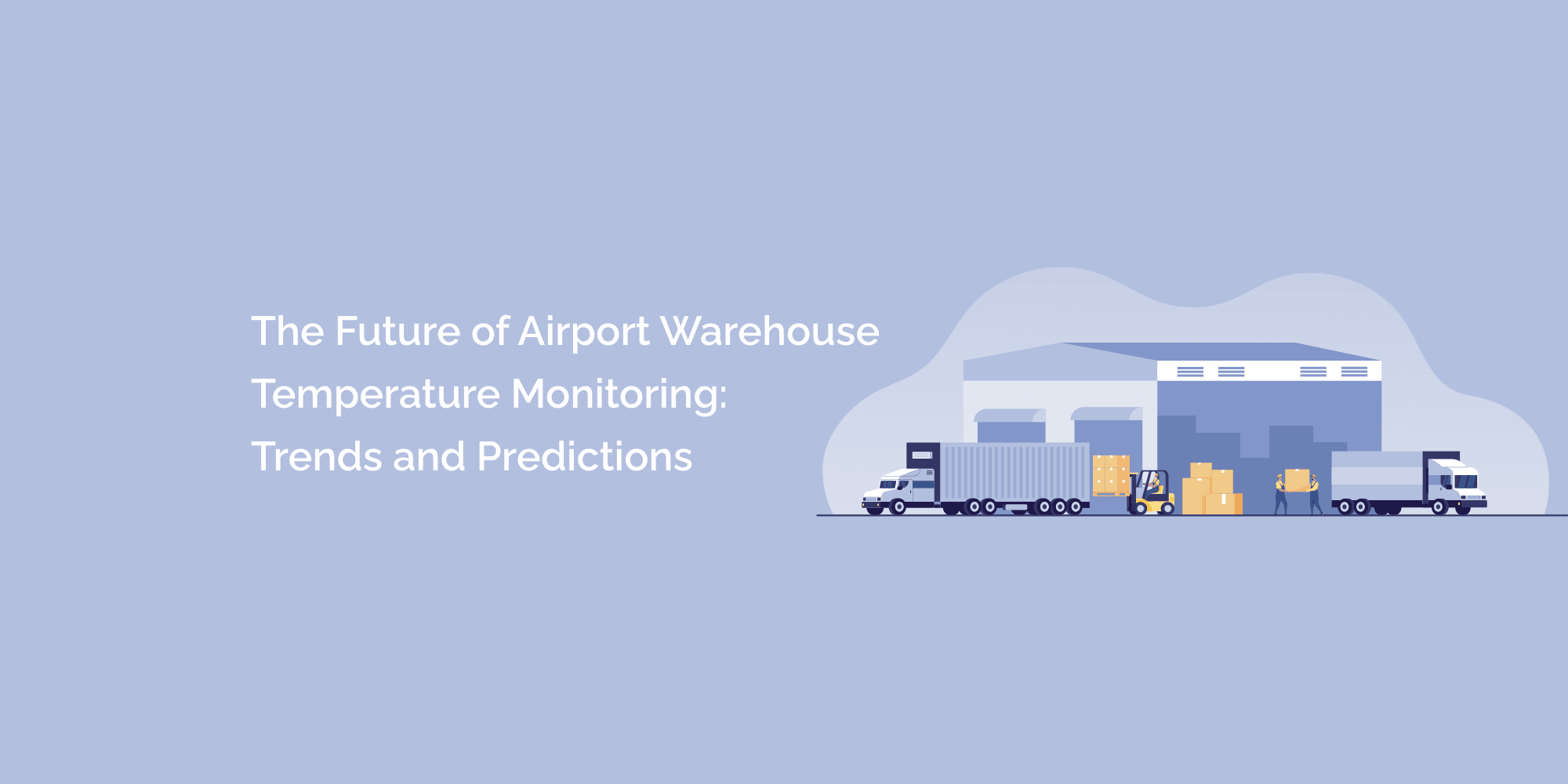Airport warehouse temperature monitoring plays a critical role in ensuring the quality and safety of goods stored within these facilities. With advancements in technology and the ever-growing demands of the aviation industry, the future of temperature monitoring in airport warehouses is poised for significant transformation.
In this blog, we will explore the emerging trends and predictions that are shaping the future of airport warehouse temperature monitoring, revolutionizing the way temperature control is achieved with precision.
-
Internet of Things (IoT) Integration
The Internet of Things (IoT) has already made its mark in temperature monitoring, and its integration with airport warehouse operations will continue to gain momentum. IoT-enabled devices, such as temperature sensors, data loggers, and monitoring systems, will be interconnected to create a seamless network of data collection and analysis.
With IoT integration, airport warehouses will have real-time visibility into temperature conditions across their facilities. Sensor data will be transmitted and stored in the cloud, allowing for easy access and analysis. Warehouse managers will be able to monitor temperature variations, identify potential issues, and take proactive measures to maintain optimal conditions. Additionally, IoT integration will enable predictive analytics, helping to anticipate temperature fluctuations and optimize warehouse operations.
-
Artificial Intelligence (AI) and Machine Learning (ML) Algorithms
Artificial Intelligence (AI) and Machine Learning (ML) algorithms are set to revolutionize airport warehouse temperature monitoring. These technologies will enable warehouses to move from reactive to proactive temperature control strategies. AI algorithms will analyze vast amounts of historical temperature data, identify patterns, and predict future trends with remarkable accuracy.
ML algorithms will continuously learn from real-time data, allowing for adaptive temperature control strategies. They will detect anomalies and deviations from expected temperature ranges, enabling early intervention and preventing potential issues. AI and ML technologies will optimize energy usage, reduce waste, and enhance the overall efficiency of temperature control systems in airport warehouses.
-
Blockchain for Data Security and Traceability
Blockchain technology, known for its immutability and transparency, will play a crucial role in ensuring data security and traceability in airport warehouse temperature monitoring. Temperature data recorded by sensors can be timestamped, encrypted, and added to a distributed ledger within the blockchain network.
This decentralized approach eliminates the risk of data tampering or manipulation, providing a trustworthy and auditable record of temperature readings throughout the supply chain. In the future, stakeholders, including regulatory bodies and customers, will be able to access and verify the integrity of temperature data, ensuring compliance with temperature regulations and quality assurance standards.
-
Advanced Data Analytics and Visualization
As the volume of data generated by temperature monitoring systems increases, advanced data analytics and visualization tools will become essential for extracting meaningful insights. Airport warehouses will employ sophisticated data analytics platforms that can process large datasets, detect trends, and identify correlations.
These platforms will provide intuitive and user-friendly dashboards, enabling warehouse managers to visualize temperature data in real-time. Predictive analytics models will help identify potential risks and optimize warehouse operations. Data-driven insights will empower decision-makers to implement proactive measures, improve operational efficiency, and enhance product quality within airport warehouses.
-
Integration of Robotics and Automation
The integration of robotics and automation will transform the landscape of airport warehouse temperature monitoring. Robotics will enable autonomous monitoring and control of temperature-sensitive areas, reducing the reliance on manual checks and minimizing human error.
Robotic systems equipped with temperature sensors will navigate warehouse environments, collecting data and transmitting it to centralized monitoring systems. Automation will enable the swift execution of corrective actions when temperature variations exceed predefined thresholds. This integration will not only enhance precision but also improve efficiency and reduce operational costs in airport warehouses.
-
Data-driven Predictive Maintenance
Data-driven predictive maintenance will become a key aspect of temperature monitoring in airport warehouses. By analyzing sensor data, AI algorithms will be able to predict the health and performance of temperature control systems. Early detection of potential equipment failures or malfunctions will allow for proactive maintenance, minimizing downtime and ensuring continuous temperature control.
Predictive maintenance will optimize the lifecycle of temperature control equipment, reducing maintenance costs and improving overall system reliability. By leveraging AI and ML technologies, airport warehouses can transition from reactive maintenance practices to a proactive approach, ultimately enhancing operational efficiency and reducing the risk of temperature-related issues.
-
Integration with Supply Chain Visibility
Temperature monitoring in airport warehouses will be closely integrated with supply chain visibility systems. Real-time temperature data will be shared with logistics partners, suppliers, and customers, ensuring transparency and accountability throughout the entire supply chain.
This integration will enable stakeholders to monitor the temperature conditions of goods in transit and at rest in airport warehouses. With increased visibility, potential temperature-related issues can be addressed promptly, reducing the risk of product damage or spoilage. Improved supply chain visibility will enhance collaboration, optimize inventory management, and facilitate more efficient and secure movement of temperature-sensitive goods.
Conclusion
The future of airport warehouse temperature monitoring is promising, driven by innovative technologies that enable precision, efficiency, data security, and enhanced supply chain visibility. The integration of Internet of Things (IoT), Artificial Intelligence (AI), Machine Learning (ML), blockchain, advanced data analytics, robotics, and automation will reshape the way temperature control is achieved within airport warehouses.
These technologies will empower warehouse managers to take proactive measures, optimize energy usage, reduce waste, and maintain compliance with temperature regulations. Real-time data monitoring, predictive analytics, and automated control systems will revolutionize warehouse operations and enhance the quality and safety of stored goods.
As the aviation industry continues to evolve, airport warehouses must adapt to meet the increasing demands and challenges. Embracing these emerging trends and predictions will position airport warehouse temperature monitoring at the forefront of innovation, ensuring the efficient and secure movement of goods in the global supply chain.








